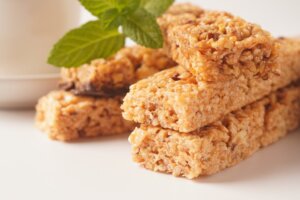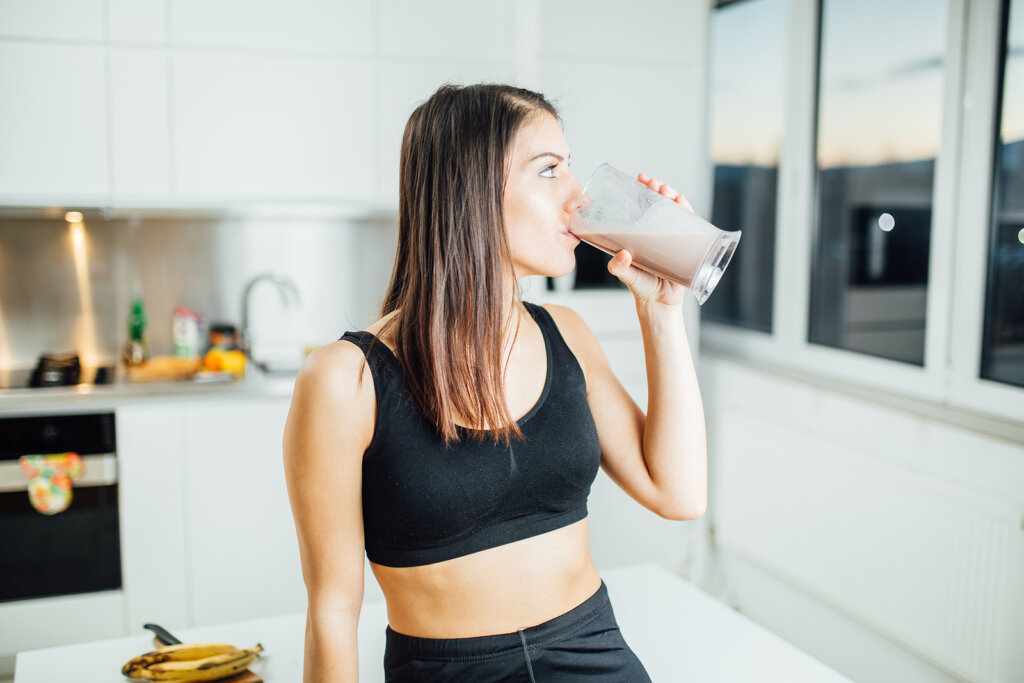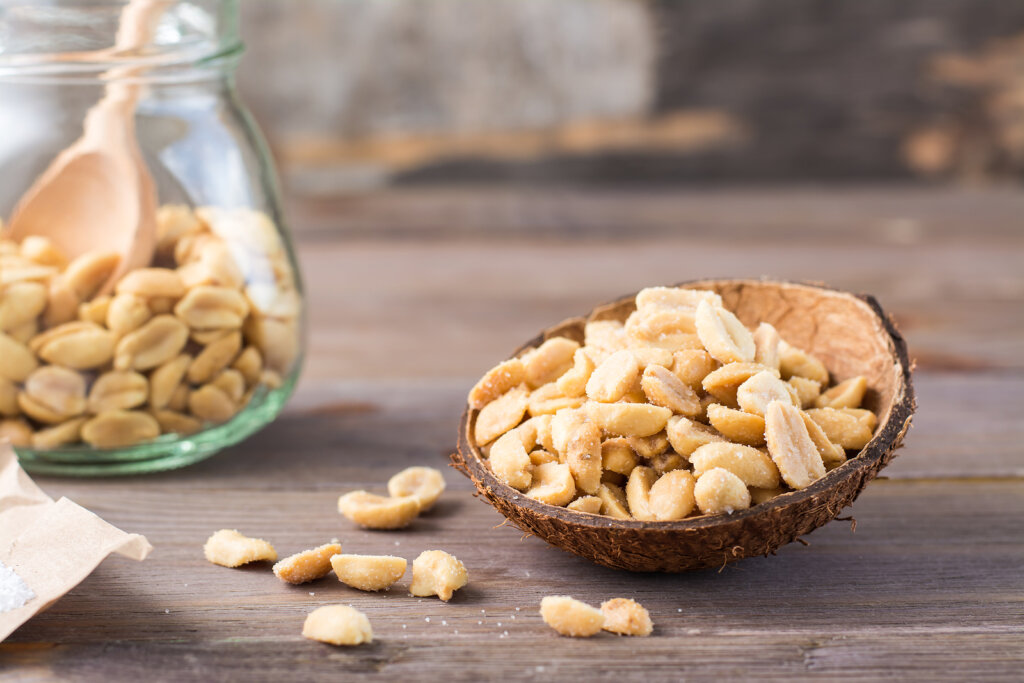"Smart Food" The New Way of Eating

“Smart food” is one of the newest eating methods that offer medium-term health benefits. It’s based on the consumption of products, such as shakes or bars, for those times when you don’t have the option of eating more elaborate meals.
However, in order to notice a positive effect, it’s necessary to combine this dietary method with the practice of physical exercise on a regular basis. This is because if a stimulus isn’t generated in the form of activity, it’s possible that your body will reduce its metabolic efficiency.
The difference between “smart food” and other food substitutes

The consumption of products that replace meals first originated years ago. However, most of the foods made for this purpose fell into the category of industrial ultra-processed products. They had few quality ingredients as well as an excessive concentration of unhealthy additives.
However, “smart food” proposes the creation of functional foods through the use of ingredients with positive properties. Among them are oats, olive oil, pea proteins, and gofio, etc. The combination of these products results in foodstuffs with good nutritional values.
Furthermore, “smart food” doesn’t have to be synonymous with a low-calorie diet. In fact, it’s possible to propose a regime that meets the daily requirements in both energy and nutrients. This means it’s easy to stick to since hunger between meals is avoided.
When are specific “smart food” products eaten?
You can choose at what time of the day to introduce “smart foods”. However, the most common times are at breakfast and between meals. Nevertheless, the first and the penultimate meal of the day are usually the most conflictive in terms of the presence of ultra-processed foods. This is because these elements are capable of damaging health, as stated in a study published in the journal BMJ.
The inclusion of “smart food” in the diet allows for the improvement of nutrition. Furthermore, it avoids the consumption of large amounts of simple sugars and trans fats. In the medium term, this translates into a lower incidence of type 2 diabetes and other metabolic conditions that affect body composition.
It’s also possible to consume this kind of product at lunch and dinner, as a complement to prepared dishes or even as a substitute for them. However, you should never eliminate vegetables from your diet. Because vegetables contain antioxidants. These are elements that research has proved are decisive in preventing the development of certain complex medical conditions.
“Smart food” respects the environment
Another benefit of “smart food” is that many of the foods in this meal plan are prepared in ready portions for you to consume at any time of day. This means you throw less food away thus reducing the overall amount of garbage and waste elements. Consequently, it’s an ecological benefit.
It’s even possible to find foods that are prepared from scraps of good quality ingredients that were to be thrown away. As a matter of fact, the tasty and nutritious parts of certain products are sometimes thrown away at an industrial level. However, their use can be positive for both human health and the environment.
“Smart food”, a new way of eating

As you’ve seen, “smart food” is a novel eating method that proposes the consumption of snacks throughout the day made from fresh ingredients and with a high nutritional density. Nevertheless, it’s still essential to check the labeling of these products to make sure that they’re free of added sugars and artificial additives.
On the other hand, the inclusion of these kinds of foods in the diet shouldn’t reduce the intake of healthy foods, such as vegetables. Indeed, it’s important to ensure that the daily protein requirements are met and that antioxidants are consumed in sufficient quantities.
“Smart food” is one of the newest eating methods that offer medium-term health benefits. It’s based on the consumption of products, such as shakes or bars, for those times when you don’t have the option of eating more elaborate meals.
However, in order to notice a positive effect, it’s necessary to combine this dietary method with the practice of physical exercise on a regular basis. This is because if a stimulus isn’t generated in the form of activity, it’s possible that your body will reduce its metabolic efficiency.
The difference between “smart food” and other food substitutes

The consumption of products that replace meals first originated years ago. However, most of the foods made for this purpose fell into the category of industrial ultra-processed products. They had few quality ingredients as well as an excessive concentration of unhealthy additives.
However, “smart food” proposes the creation of functional foods through the use of ingredients with positive properties. Among them are oats, olive oil, pea proteins, and gofio, etc. The combination of these products results in foodstuffs with good nutritional values.
Furthermore, “smart food” doesn’t have to be synonymous with a low-calorie diet. In fact, it’s possible to propose a regime that meets the daily requirements in both energy and nutrients. This means it’s easy to stick to since hunger between meals is avoided.
When are specific “smart food” products eaten?
You can choose at what time of the day to introduce “smart foods”. However, the most common times are at breakfast and between meals. Nevertheless, the first and the penultimate meal of the day are usually the most conflictive in terms of the presence of ultra-processed foods. This is because these elements are capable of damaging health, as stated in a study published in the journal BMJ.
The inclusion of “smart food” in the diet allows for the improvement of nutrition. Furthermore, it avoids the consumption of large amounts of simple sugars and trans fats. In the medium term, this translates into a lower incidence of type 2 diabetes and other metabolic conditions that affect body composition.
It’s also possible to consume this kind of product at lunch and dinner, as a complement to prepared dishes or even as a substitute for them. However, you should never eliminate vegetables from your diet. Because vegetables contain antioxidants. These are elements that research has proved are decisive in preventing the development of certain complex medical conditions.
“Smart food” respects the environment
Another benefit of “smart food” is that many of the foods in this meal plan are prepared in ready portions for you to consume at any time of day. This means you throw less food away thus reducing the overall amount of garbage and waste elements. Consequently, it’s an ecological benefit.
It’s even possible to find foods that are prepared from scraps of good quality ingredients that were to be thrown away. As a matter of fact, the tasty and nutritious parts of certain products are sometimes thrown away at an industrial level. However, their use can be positive for both human health and the environment.
“Smart food”, a new way of eating

As you’ve seen, “smart food” is a novel eating method that proposes the consumption of snacks throughout the day made from fresh ingredients and with a high nutritional density. Nevertheless, it’s still essential to check the labeling of these products to make sure that they’re free of added sugars and artificial additives.
On the other hand, the inclusion of these kinds of foods in the diet shouldn’t reduce the intake of healthy foods, such as vegetables. Indeed, it’s important to ensure that the daily protein requirements are met and that antioxidants are consumed in sufficient quantities.
All cited sources were thoroughly reviewed by our team to ensure their quality, reliability, currency, and validity. The bibliography of this article was considered reliable and of academic or scientific accuracy.
- Srour, B., Fezeu, L. K., Kesse-Guyot, E., Allès, B., Méjean, C., Andrianasolo, R. M., Chazelas, E., Deschasaux, M., Hercberg, S., Galan, P., Monteiro, C. A., Julia, C., & Touvier, M. (2019). Ultra-processed food intake and risk of cardiovascular disease: prospective cohort study (NutriNet-Santé). BMJ (Clinical research ed.), 365, l1451. https://doi.org/10.1136/bmj.l1451
- Neha, K., Haider, M. R., Pathak, A., & Yar, M. S. (2019). Medicinal prospects of antioxidants: A review. European journal of medicinal chemistry, 178, 687–704. https://doi.org/10.1016/j.ejmech.2019.06.010
This text is provided for informational purposes only and does not replace consultation with a professional. If in doubt, consult your specialist.







